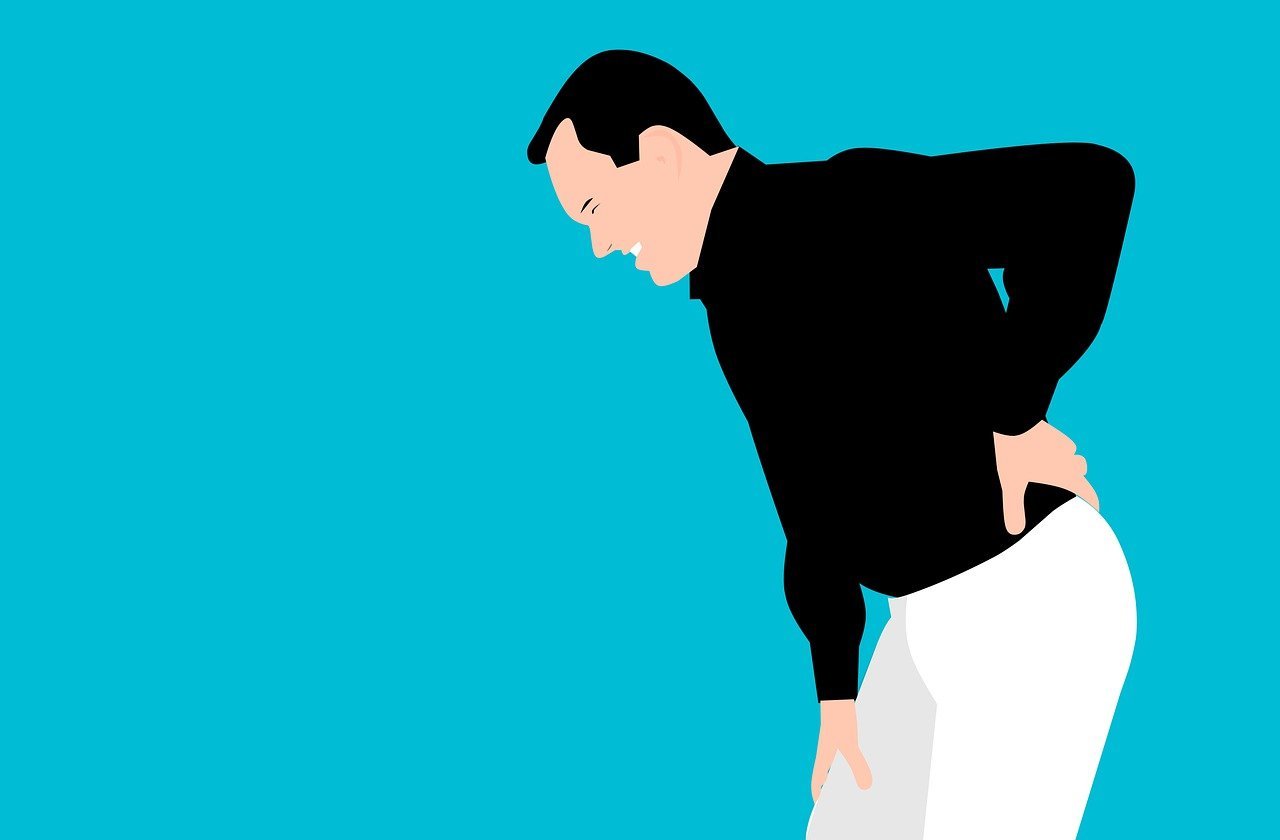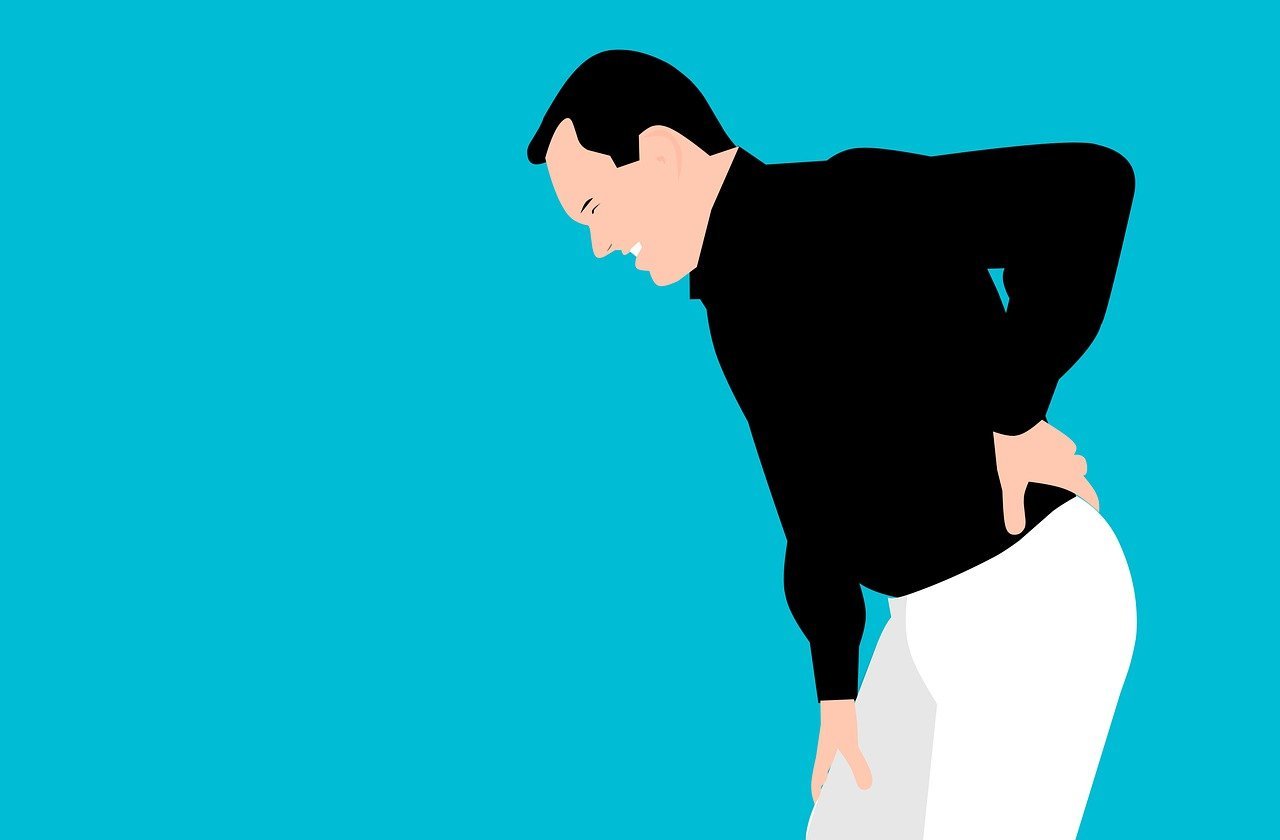
Do you often wake up with shoulder and arm pain after a night’s sleep? If so, you’re not alone. Many people struggle with discomfort in their shoulders and arms while sleeping, which can make it difficult to get the restful sleep you need. In this article, you’ll discover effective techniques to alleviate shoulder and arm pain while sleeping, allowing you to wake up feeling refreshed and pain-free. Say goodbye to restless nights and hello to a more comfortable sleep experience.

Common Causes of Shoulder and Arm Pain While Sleeping
Shoulder and arm pain while sleeping is a common problem that many people experience. There are several potential causes for this discomfort, and understanding the underlying factors can help you find relief. Some of the most common causes of shoulder and arm pain while sleeping include injury or trauma, arthritis, tendonitis, poor sleeping posture, sleeping on the affected side, muscle imbalances, and frozen shoulder. By identifying the cause of your pain, you can take steps to alleviate it and improve the quality of your sleep.
Injury or Trauma
One of the most obvious causes of shoulder and arm pain while sleeping is injury or trauma to the affected area. This can include muscle strains, sprains, dislocations, or fractures. If you have recently experienced an injury or trauma to your shoulder or arm, you may experience pain while sleeping due to the strain placed on the affected area.
Arthritis
Arthritis is another common cause of shoulder and arm pain. Osteoarthritis and rheumatoid arthritis can both contribute to joint inflammation and discomfort. While these conditions may be more common in older individuals, they can affect people of all ages. The pain associated with arthritis can be worse at night, making it difficult to find a comfortable sleeping position.
Tendonitis
Tendonitis occurs when the tendons in your shoulder or arm become inflamed or irritated. This can cause pain and limited range of motion, making it uncomfortable to sleep. Tendonitis can be caused by overuse or repetitive movements, and it is important to identify and address the underlying cause to alleviate the pain.
Poor Sleeping Posture
Your sleeping posture plays a significant role in determining whether you will experience shoulder and arm pain while sleeping. Sleeping in a position that puts strain on your shoulder or arm can lead to discomfort and pain. It is important to maintain a neutral position while sleeping, with your spine aligned and your shoulders relaxed.
Sleeping on the Affected Side
If you are already experiencing shoulder or arm pain, sleeping on the affected side can exacerbate the discomfort. The pressure placed on the injured area can increase pain and prevent you from getting a good night’s sleep. It may be necessary to modify your sleeping position to alleviate the pain and promote better sleep.
Muscle Imbalances
Muscle imbalances can occur when certain muscles in your shoulder and arm become weak or tight, leading to altered movement patterns. This can place strain on the surrounding muscles and joints, resulting in pain while sleeping. It is important to address these muscle imbalances through targeted exercises to restore balance and alleviate pain.
Frozen Shoulder
Frozen shoulder, also known as adhesive capsulitis, is a condition characterized by stiffness and pain in the shoulder joint. This can make it difficult to move or sleep comfortably. Frozen shoulder typically develops gradually and can affect sleep quality if left untreated. Physical therapy and gentle stretching exercises can help improve range of motion and alleviate discomfort.
Identifying the Pain
To effectively reduce shoulder and arm pain while sleeping, it is important to first identify the specific characteristics of the pain. By understanding the location, intensity, frequency, associated symptoms, and factors that worsen or alleviate the pain, you can tailor your pain relief strategies to address your unique needs.
Location of the Pain
Start by determining where exactly the pain is located in your shoulder and arm. Is it a dull ache throughout the entire area, or is it focused on a specific spot? Understanding the location of the pain can provide valuable insights into the underlying cause.
Intensity and Frequency of Pain
Consider the intensity and frequency of your shoulder and arm pain while sleeping. Is it mild and occasional, or severe and constant? Understanding the intensity and frequency can help you gauge the severity of the issue and determine appropriate treatment methods.
Associated Symptoms
Take note of any associated symptoms that accompany your shoulder and arm pain while sleeping. This can include stiffness, tingling, numbness, or weakness in the affected area. These symptoms can provide additional clues to the cause of your pain and help guide your treatment approach.
Factors that Worsen or Alleviate the Pain
Pay attention to any specific factors that worsen or alleviate your shoulder and arm pain while sleeping. This can include certain sleeping positions, activities performed during the day, or the application of heat or cold therapy. Understanding these triggers and relievers can help you make adjustments to your sleep environment and lifestyle habits to find relief.
Improving Sleep Environment
Creating a sleep environment that supports proper shoulder and arm alignment can greatly alleviate pain and discomfort. By making a few changes to your mattress, pillows, and overall sleep setup, you can improve your sleep quality and reduce the chances of waking up with shoulder and arm pain.
Choosing the Right Mattress
Investing in a high-quality mattress that provides adequate support is essential for a healthy sleep environment. Look for a mattress that offers a balance of cushioning and firmness, specifically designed to promote spinal alignment and relieve pressure points.
Using Supportive Pillows
Pillows play a crucial role in supporting your head, neck, and shoulders during sleep. Opt for pillows that are specifically designed to provide support to the shoulder and neck area. Memory foam pillows, cervical pillows, and orthopedic pillows are all excellent options to consider.
Positioning Your Body Correctly
Maintaining proper body alignment while sleeping can help prevent unnecessary strain on your shoulder and arm. If you are a side sleeper, try placing a pillow between your knees to align your spine. If you sleep on your back, consider using a pillow to support your lower back and maintain a natural curve.
Creating a Comfortable Sleep Environment
Ensure that your bedroom is conducive to a comfortable and restful sleep. Make sure the room is dark, quiet, and at a comfortable temperature. Consider using blackout curtains, earplugs, or a white noise machine to create the ideal sleep environment for you.
Pre-Sleep Routine for Pain Relief
Establishing a pre-sleep routine can help relax your muscles and prepare your body for a restful night’s sleep. This routine can include various activities that promote pain relief and relaxation.
Warm-Up Exercises
Engaging in gentle warm-up exercises before bed can help increase blood flow to the muscles and joints, preparing them for rest. This can include activities such as shoulder circles, arm swings, and neck stretches. Take your time and listen to your body, stopping if any exercise causes pain.
Stretching Your Shoulders and Arms
Stretching your shoulder and arm muscles before bed can help alleviate tension and promote relaxation. Incorporate stretches that target the muscles around the shoulder joint, such as the crossover arm stretch, overhead tricep stretch, and doorframe stretch.
Applying Heat or Cold Therapy
Applying heat or cold therapy to your shoulder and arm area can help reduce pain and inflammation. Experiment with both heat packs and ice packs to determine which provides the most relief for you. Apply the pack for 10-15 minutes before bed to prepare your muscles for sleep.
Using Relaxation Techniques
Incorporating relaxation techniques into your pre-sleep routine can help calm your mind and relax your body. This can include deep breathing exercises, meditation, or gentle yoga. Find what works best for you and make it a regular part of your nighttime routine.

Sleeping Positions for Shoulder and Arm Pain Relief
Your sleeping position can have a significant impact on your shoulder and arm pain. By finding the most suitable sleeping position, you can minimize strain on your muscles and joints and promote pain relief.
Sleeping on Your Back
Sleeping on your back with a pillow supporting your neck and a small pillow or rolled-up towel supporting your lower back can help maintain proper spinal alignment. Place a pillow under your knees to alleviate pressure on your lower back and keep your spine in a neutral position.
Sleeping on Your Side
If you prefer sleeping on your side, try placing a pillow between your knees to keep your spine aligned. Consider placing a small pillow or rolled-up towel under your waist for additional support. To minimize strain on your shoulder, avoid tucking your arm under your pillow or body.
Using a Body Pillow
A body pillow can be a useful tool for supporting your shoulder and arm while sleeping. Place the body pillow lengthwise along your body and hug it to provide support to your shoulder and arm. This can help alleviate pressure and promote proper alignment.
Elevating Your Arm
If you experience pain primarily in your arm, elevating it while sleeping can help reduce swelling and relieve discomfort. Use a pillow or rolled-up towel to prop your arm up while lying on your back or side. This will help minimize pressure on the affected area.
Supportive Pillows and Sleep Aids
Using supportive pillows and sleep aids specifically designed for shoulder and arm pain can provide additional comfort and relief. Consider the following options:
Memory Foam Pillows
Memory foam pillows are known for their ability to contour to the shape of your head and neck, providing excellent support and pressure relief. Look for a memory foam pillow with proper cervical support to ensure optimal alignment for your shoulders and neck.
Cervical Pillows
Cervical pillows are designed to support the natural curvature of your neck and promote proper spinal alignment. These pillows can help alleviate pain and discomfort in the shoulders and arms by providing optimal support to the upper body.
Orthopedic Pillows
Orthopedic pillows are specifically designed to support specific body parts affected by pain or discomfort. Look for orthopedic pillows that offer targeted support to the shoulders and arms, providing relief and promoting proper alignment.
Mattress Toppers
If your mattress is too firm or lacks proper support, consider investing in a mattress topper. A mattress topper can add an extra layer of cushioning and support to your existing mattress, helping to alleviate pressure on your shoulders and arms and enhance sleep comfort.

Shoulder and Arm Strengthening Exercises
Engaging in shoulder and arm strengthening exercises can help improve muscle imbalances, increase stability, and reduce pain. Incorporate exercises that target the rotator cuff, shoulders, and arms into your regular workout routine.
Rotator Cuff Exercises
Rotator cuff exercises can help strengthen the muscles surrounding the shoulder joint. These exercises can include external rotations, internal rotations, lateral raises, and scapular squeezes. Consult with a physical therapist or exercise specialist to ensure proper form and technique.
Shoulder Shrugs
Shoulder shrugs can help improve shoulder stability and strengthen the trapezius muscles. Stand or sit with your arms by your sides and shoulders relaxed. Slowly raise your shoulders towards your ears and hold for a few seconds before lowering them back down. Repeat for several repetitions.
Shoulder Blade Squeezes
Shoulder blade squeezes target the muscles between your shoulder blades, helping to improve posture and reduce pain. Sit or stand with your arms by your sides. Squeeze your shoulder blades together, as if trying to hold a pencil between them, and hold for a few seconds before releasing. Repeat for several repetitions.
Bicep Curls and Tricep Extensions
Bicep curls and tricep extensions can help strengthen the muscles in your arms, reducing strain on the shoulder joint. Use light weights or resistance bands to perform these exercises. Remember to maintain proper form and control throughout the movements.
Stretching Exercises
Incorporating stretching exercises into your routine can help improve flexibility and reduce muscle tension. Focus on stretches that target the shoulders and arms, such as the cross-body arm stretch, behind-the-back stretch, and tricep stretch. Hold each stretch for 30 seconds and repeat several times on each side.
Seeking Professional Help
If your shoulder and arm pain while sleeping persists or worsens, it is important to seek professional help. Consult with a doctor or orthopedic specialist who can properly diagnose the underlying cause of your pain and recommend appropriate treatment options.
Consulting a Doctor or Orthopedic Specialist
A doctor or orthopedic specialist can conduct a thorough examination and review your medical history to determine the cause of your shoulder and arm pain. They may order additional tests such as X-rays, MRI scans, or ultrasound to obtain a more detailed view of the affected area.
Physical Therapy
Physical therapy can be an effective treatment option for shoulder and arm pain. A physical therapist can design a personalized exercise program to strengthen the muscles, improve range of motion, and reduce pain. They may also provide manual therapy techniques and educate you on proper body mechanics to prevent future injuries.
Massage Therapy
Massage therapy can help relax tight muscles, improve circulation, and reduce pain associated with shoulder and arm discomfort. A skilled massage therapist can target the affected muscles and promote relaxation, providing temporary relief from pain and improving overall sleep quality.
Acupuncture
Acupuncture is a traditional Chinese medicine practice that involves the insertion of thin needles into specific points on the body. This can help restore balance, relieve pain, and improve sleep quality. Consult with a licensed acupuncturist who has experience in treating shoulder and arm pain.
Medication Options
In some cases, over-the-counter or prescription medications may be recommended to manage pain and inflammation associated with shoulder and arm discomfort. Nonsteroidal anti-inflammatory drugs (NSAIDs), muscle relaxants, or corticosteroid injections may be prescribed to alleviate symptoms and improve sleep.
Lifestyle Changes for Long-Term Relief
Making certain lifestyle changes can contribute to long-term relief from shoulder and arm pain while sleeping. By adopting healthy habits and taking steps to prevent further strain or injury, you can improve your overall well-being and reduce the frequency and severity of your pain.
Maintaining a Healthy Weight
Carrying excess weight can put additional strain on your joints, including the shoulder and arm. Losing weight through a balanced diet and regular exercise can help reduce pressure on the affected areas and improve overall sleep quality.
Improving Posture
Maintaining good posture throughout the day can help alleviate strain on the shoulders and arms. Be mindful of your posture while sitting, standing, or performing any activities. Use ergonomic chairs and equipment that support proper alignment and consider engaging in posture-improving exercises and stretches.
Avoiding Excessive Use of Electronic Devices
Prolonged use of electronic devices, such as computers, laptops, and smartphones, can contribute to poor posture and muscle imbalances. Take regular breaks, practice proper ergonomics, and limit screen time to prevent excessive strain on the shoulders and arms.
Regular Exercise
Engaging in regular exercise can help strengthen the muscles surrounding the shoulder and arm, improve flexibility, and promote overall joint health. Include a combination of cardiovascular exercise, strength training, and stretching in your routine to support a healthy musculoskeletal system.
Managing Stress Levels
Stress can contribute to muscle tension and exacerbate shoulder and arm pain. Incorporate stress management techniques into your daily routine, such as deep breathing exercises, meditation, or engaging in activities you enjoy. Prioritizing self-care and finding healthy outlets for stress can help reduce pain and promote better sleep.
When to Seek Medical Attention
While many cases of shoulder and arm pain while sleeping can be managed with self-care and lifestyle modifications, there are certain situations where medical attention is necessary. If you experience any of the following symptoms, it is important to seek prompt medical evaluation:
Persistent or Worsening Pain
If your shoulder and arm pain persists or worsens despite your efforts to manage it, it is essential to consult with a healthcare professional. They can further investigate the cause and recommend appropriate treatment options.
Weakness or Numbness in the Arm
The presence of weakness or numbness in the arm can be a sign of nerve compression or damage. This requires immediate medical attention to prevent further complications.
Difficulty Sleeping Despite Efforts
If your shoulder and arm pain continue to interfere with your ability to sleep despite implementing various strategies, it is advisable to seek medical attention. A healthcare professional can help determine the underlying cause and provide targeted treatment options.
Signs of Infection or Inflammation
If you notice redness, swelling, or increased warmth in the shoulder or arm, it may indicate an infection or inflammation. Prompt medical attention is necessary to prevent complications and ensure appropriate treatment.
Loss of Range of Motion
A significant loss of range of motion in the shoulder or arm may indicate a more serious underlying issue. Seeking medical evaluation is crucial to prevent further damage and initiate appropriate treatment.
In conclusion, shoulder and arm pain while sleeping can be a frustrating and disruptive issue. By understanding the common causes of this discomfort, identifying the specific characteristics of the pain, and implementing appropriate strategies, you can find relief and improve your sleep quality. Whether through improving your sleep environment, incorporating pre-sleep routines, adjusting your sleeping positions, using supportive pillows and sleep aids, engaging in strengthening exercises, seeking professional help, making lifestyle changes, or knowing when to seek medical attention, taking proactive measures can help alleviate shoulder and arm pain and promote overall well-being. Remember to consult with a healthcare professional for personalized advice and guidance tailored to your specific situation.





